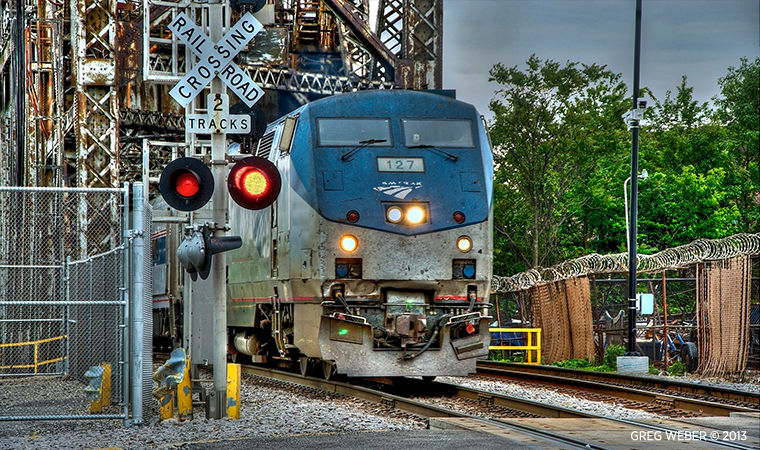It is well known that our roads, bridges ports and railways are becoming increasingly antiquated and structurally unsound. The American Society of Civil Engineers’ 2013 report card gave America’s infrastructure a D+, noting it would take an investment of $3.6 trillion by 2020 to make things right. The fact that national news outlets devote so little time to the scale of our crumbling infrastructure on a regular basis is a travesty. It shouldn’t take a tragedy like Tuesday’s Amtrak derailment in Philadelphia to focus the media’s attention on the problems plaguing our nation’s infrastructure.
Now that the media, and by extension, the nation’s eyes are focused squarely on Philadelphia and Amtrak’s issues, it is time to have an open and honest discussion about the state of America’s infrastructure. This latest train accident provides a solemn opportunity for the media to focus on solutions to this problem instead of division. From the coverage of the accident so far, it appears to be an opportunity missed.
As expected, in order to keep pace with the news cycle the media has boiled down their narrative to a few key storylines. Unfortunately those storylines are focused on politics and pointing fingers and not the lives lost. Almost instantaneously, Amtrak funding and positive train control (PTC) became the headline. It didn’t help matters when a House appropriations subcommittee, apparently blind to the optics of their actions, voted to cut Amtrak funding from $1.5 billion to $1.3 billion a day after the accident.
Would positive train control have stopped the accident in Philadelphia? Most likely, yes. Is the reduction in Amtrak funding a symptom of congressional dysfunction as the media implies? No, and by oversimplifying a complex issue, the media’s narrative does a disservice to the larger issue of transportation funding in America.
PTC’s backstory is a perfect example of how good intentions rarely result in sound policy. Congress passed the Rail Safety Improvement Act (RSIA) of 2008, which mandated that PTC should be implemented on rail lines carrying people and Toxic by Inhalation (TIH) materials by 2015. What followed was a rule from the Federal Rail Administration that failed to take into account the complexity of the rail system and cost of implementing the system on the national basis.
The crux of the issue is that PTC is complex, requiring bespoke technologies that in many cases weren’t readily available in 2008 when the mandate was put into effect. In 2011, Congressman Bill Shuster, then Chairman of the Railroads Subcommittee of the House Transportation Committee noted that “The FRA estimated a cost-benefit ratio of 15:1 for required installation of PTC systems when it issued its Notice of Proposed Rulemaking, and an even higher cost-benefit ratio of 22:1 in its final rule.”
That cost ratio translates into real money. To date, Class I railroads have spent north of $4.5 billion to install PTC on the 60,000 miles of lines subject to the FRA mandate. When completed, the total investment on the technology is expected to top $9 billion. Remember, that is just for privately operated freight rail investment. PTC also needs to be implemented on commuter railroads and Amtrak with a price tag of $2 billion or more. The grand total for full PTC implementation could top out at $13.2 billion. For cash-strapped commuter rail services, and a chronically mismanaged Amtrak, the 2015 mandate could put equally important improvements on the back-burner.
When interviewed by CNN, Peter Goelz, a former NTSB official put it this way:
“The real dilemma that you face … is you have a limited, a finite amount of money each year that you can spend on infrastructure and safety,” said Peter Goelz, a former managing director of the NTSB. “Do you spend the money on high consequence, low probability events? And I would call the accident two days ago high consequence but low probability. Or do you spend it on high probability, lower consequence items such as working on electrical systems or air conditioning?”
Unfortunately, the media hasn’t been too keen on accounting for all of the shades of grey involving PTC and have created a starkly black and white view of rail safety. By doing so, they have created an incorrect perception that there is a vacuum of leadership in Congress. That perception is already felt in Washington and there are rumbles among Members reacting to the media’s call to action to fill that vacuum.
Nothing is more dangerous than Members of Congress who feel they need to act fast because of an emergency. Knee jerk reactions by government can easily make a situation worse with poorly designed legislation and even more shortsighted mandates.
This is an important point that can be too easily lost in the media’s coverage. Billions of dollars have already been spent on implementing PTC. These systems have been in the developmental stages for decades. Rail operators agree that it is a critical safety system that must be put in place. However, unrealistic government mandates are making it harder to make an already safe mode of transportation even safer. The media’s narrative could easily make things worse.
The debate over PTC now being hashed out in the media wouldn’t be happening without the Amtrak derailment, but this incident didn’t happen in a vacuum of its own. Federal funding for our nation’s transportation priorities expires at the end of May. Congress is working on a six year transportation reauthorization that is critical to help improve our overall infrastructure, including rail safety. Before a vote on this long term bill can occur, Congress will need to agree on a short-term extension of current funding. The media should let the process work instead of creating a need for urgent action where action is already being undertaken.
